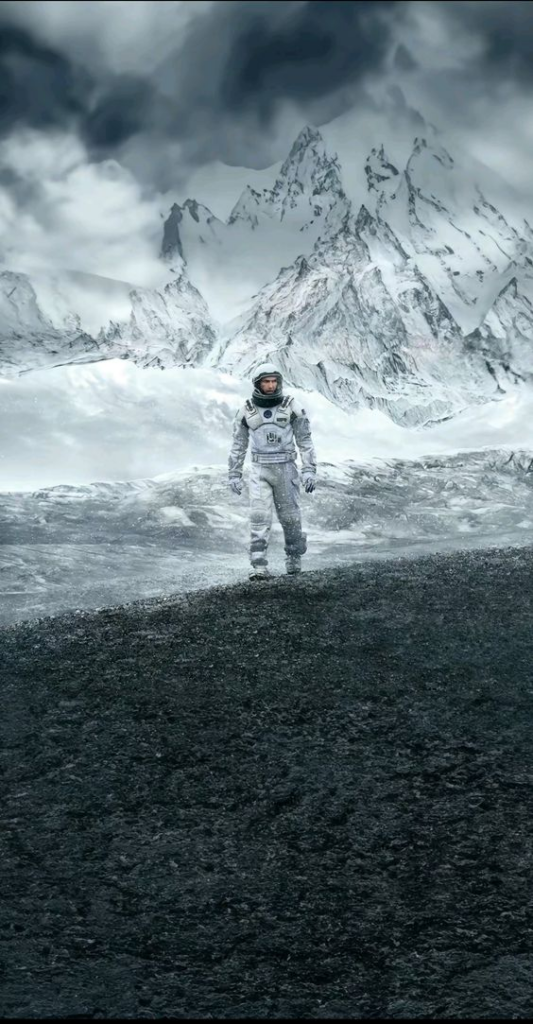Introduction
“Interstellar 2” has captured the imagination of audiences worldwide with its breathtaking visuals and mind-bending concepts. But how much of what we see on the screen is rooted in actual science, and how much is pure fiction? This article dives deep into the science behind “Interstellar 2,” separating fact from fiction and exploring the futuristic technologies that make the film so captivating.

The Setting: A Futuristic Space Odyssey
“Interstellar 2” transports us to a future where humanity is on the brink of extinction and looking to the stars for salvation. The film’s setting, with its advanced spacecraft and distant planets, is a testament to human ingenuity and the relentless pursuit of exploration. This vision, while grand, draws on current space missions like NASA’s Artemis program and SpaceX’s Mars ambitions, painting a picture of what could be possible with continued innovation.
Space Travel: Fact and Fiction
Currently, space travel is limited by technology and resources, with missions to the Moon and Mars being the next big milestones. “Interstellar 2” takes this a step further, envisioning advanced spacecraft capable of interstellar travel. These ships are depicted as having capabilities far beyond our current reach, such as faster-than-light travel and sustainable life support systems for long-duration missions.
Wormholes: The Gateway to Other Galaxies
Wormholes are a staple of science fiction, acting as shortcuts through space and time. In theory, wormholes are possible solutions to Einstein’s field equations in general relativity, but they remain purely hypothetical. “Interstellar 2” uses wormholes as a central plot device, allowing characters to traverse vast distances instantaneously. While this makes for exciting storytelling, the reality of creating or even discovering a traversable wormhole is still far beyond our scientific capabilities.
Black Holes: Fact, Fiction, and Theories
Black holes are one of the most fascinating and mysterious objects in the universe. The film portrays them with stunning visual accuracy, thanks in part to consulting with physicists like Kip Thorne. Real black holes are regions of spacetime where gravity is so strong that nothing, not even light, can escape. The depiction in “Interstellar 2” of a black hole’s event horizon and the spaghettification of matter are grounded in actual scientific concepts, though dramatized for effect.

Time Dilation and Relativity
Einstein’s theory of relativity introduces the concept of time dilation, where time moves slower in stronger gravitational fields. “Interstellar 2” uses this idea to dramatic effect, showing how characters experience time differently depending on their proximity to a massive black hole. This phenomenon is scientifically accurate, though the extent to which it is portrayed is exaggerated for narrative purposes.
The Science of Gravity
Gravity is a fundamental force that governs the motion of celestial bodies. In space, gravity behaves differently than on Earth, affecting everything from human physiology to the trajectory of spacecraft. “Interstellar 2” explores gravitational anomalies and their impact on space travel, weaving real scientific principles into its storyline. The film’s interpretation, while imaginative, raises questions about the limits of our understanding of gravity.
Quantum Mechanics and Interstellar Travel
Quantum mechanics, the study of the smallest particles in the universe, plays a significant role in theoretical physics and the potential for new technologies. “Interstellar 2” hints at quantum theories to explain some of its more fantastical elements, such as communication across vast distances and the manipulation of space-time. While these ideas are speculative, they are grounded in real scientific discussions about the future of interstellar travel.
Advanced Propulsion Systems
Current propulsion technologies, such as chemical rockets and ion thrusters, are limited in their speed and efficiency. The film showcases futuristic propulsion systems that could theoretically enable interstellar travel, including concepts like the Alcubierre drive, which proposes faster-than-light travel by warping space-time. While these ideas are still in the realm of science fiction, ongoing research in propulsion technology continues to push the boundaries.
Cryosleep and Human Hibernation
Cryosleep, or the idea of putting humans into a state of hibernation for long-duration space travel, is a recurring theme in science fiction. “Interstellar 2” explores this concept as a means to preserve human life during interstellar voyages. While we have yet to achieve true cryosleep, current research in cryogenics and suspended animation shows promise, suggesting that it might one day be possible to extend human life significantly during space travel.
Artificial Intelligence in Space Exploration
Artificial Intelligence (AI) is already playing a crucial role in space exploration, from autonomous rovers on Mars to advanced data analysis. In “Interstellar 2,” AI is depicted as a vital companion and assistant to human astronauts, capable of making complex decisions and performing tasks autonomously. This portrayal is not far from reality, as AI technology continues to advance, becoming an indispensable tool for future missions.
Colonizing New Planets: Possibilities and Challenges
The idea of colonizing new planets is central to “Interstellar 2,” where humanity must find a new home to survive. While colonizing Mars is a near-term goal for organizations like SpaceX, the film extends this to habitable planets in distant star systems. This raises significant challenges, including long-term sustainability, resource management, and the unknown effects of alien environments on human biology.
Ethical Considerations of Space Exploration
Space exploration comes with a host of ethical dilemmas, from the potential exploitation of extraterrestrial resources to the impact on indigenous life forms, if they exist. “Interstellar 2” touches on these issues, highlighting the moral responsibilities that come with expanding humanity’s reach into the cosmos. It prompts viewers to consider the consequences of our actions as we venture further into space.
The Future of Space Technology
The technologies depicted in “Interstellar 2” are a mix of current advancements and speculative future innovations. From advanced propulsion systems to AI and quantum mechanics, the film presents a vision of what might be possible if we continue to push the boundaries of science and technology. This vision inspires not only the public but also scientists and engineers working to make these concepts a reality.
Conclusion
“Interstellar 2” masterfully blends scientific fact with creative fiction, offering a glimpse into a future where humanity’s survival depends on our ability to explore and adapt to the cosmos. While some of the technologies and concepts in the film are beyond our current capabilities, they are rooted in real scientific principles and ongoing research. By examining the science behind the film, we can better appreciate the incredible possibilities that the future may hold.
FAQs
What is the most accurate scientific concept in “Interstellar 2”?
The depiction of time dilation near a black hole is one of the most scientifically accurate concepts in the film. It is based on Einstein’s theory of relativity, which predicts that time moves slower in stronger gravitational fields.
How close are we to achieving the technologies shown in the film?
While many technologies in “Interstellar 2” are speculative, we are making significant strides in areas like AI, space propulsion, and potentially cryosleep. However, interstellar travel and wormholes remain far beyond our current scientific and technological capabilities.
Can wormholes really be used for space travel?
Wormholes are theoretical constructs in general relativity that could, in theory, allow for shortcuts through space-time. However, they remain hypothetical, with no experimental evidence to support their existence or practical use for space travel.
What are the biggest scientific inaccuracies in the film?
One of the biggest scientific liberties taken in the film is the ease and speed of interstellar travel. Current technology and understanding of physics do not support the possibility of faster-than-light travel or traversable wormholes.
How does “Interstellar 2” compare to other science fiction films in terms of scientific accuracy?
“Interstellar 2” stands out for its effort to ground many of its concepts in real science, thanks in part to the consultation with physicists. While it does take creative liberties, it is generally considered one of the more scientifically accurate science fiction films.








